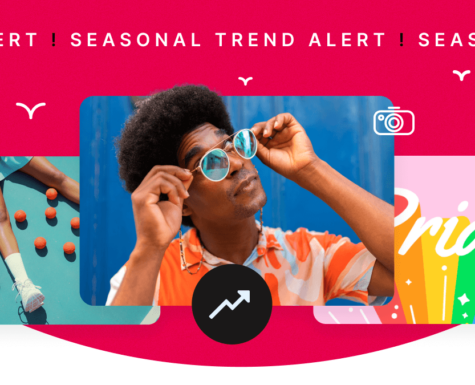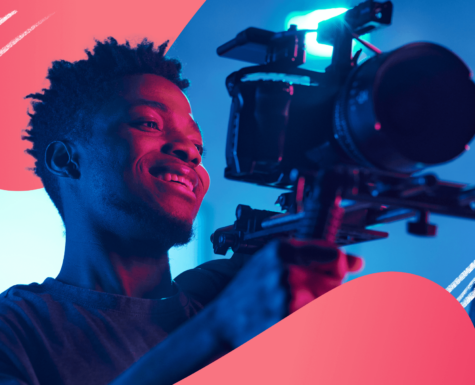Introduction to Social Media Marketing: Finding Your Channels

How can social media work for your business?
As an Author, social media is one of the most affordable and effective tools to promote your items. Social media marketing helps to develop your brand awareness, reach diverse customers and nurture your relationships across online spaces.
As all social media channels have their strengths and weaknesses, it is important to understand which is most suitable for you, your products and methods of promotion.
Here, we’ve created a breakdown of the main social media channels and their features to help you connect the dots and focus your social media strategy and campaigns in the future.


Strengths
Facebook is a handy tool to engage with customers on a more personal level as it helps maximize interactivity and provides two-way communication. It is also very commonly used amongst many age groups and audiences, making it a useful space to connect with an array of audiences.
Most people already use Facebook on a daily basis and part of the ritual is checking their newsfeed. This is a great way to share product news, promotions, giveaways or competitions. Start your Facebook promotions with a small group and then branching out to a larger audience.
Weaknesses
Since Facebook has such a large audience, it is difficult to reach specific groups or niche audiences without paying more promotional fees to cut through the competition and traffic.

Strengths
Instagram is a powerful visual tool to promote your items. It is an effective channel to reach younger audiences and connect with influencers such as bloggers. Instagram also utilizes hashtag campaigns, which can be good for promoting your products and helping audiences find you.
Researching hashtags and knowing how to use them (especially popular or trending hashtags) can help expose your products to wider audiences that may or may not follow your account already. It’s also a good place to share behind-the-scenes images or a look into the creative process of how you create your items.
Customers are interested in more than just promotional or pretty images, they are also interested in images that show how the design was made and images that connect them more to you, the Author.
Weaknesses
Promoting items on Instagram is still at a relatively high cost and with the rise in popularity and usage over the years, it can be hard to break through. It also doesn’t allow for much text or copy to be included, so this will need to be considered when telling the product story or communicating its features.

Author credit: stokkete

Strengths
Pinterest is a great visual tool to attract visual thinkers, inspiration-seekers, and trend-lovers. It is a powerful space to share product images and promotions, allowing customers to find, save and share items to their Pinterest boards and friends.
Weaknesses
Like Instagram (as a visual tool), Pinterest is not suited for extensive or timely copy. It is better used as a space to share images and graphics.

Strengths
Twitter is best for short and succinct copy and fast interactions with audiences or customers. It is an easy tool to repost, share or follow influencers or supporters and send direct messages. You can also use hashtags here to connect and share your post with wider audiences!
Weaknesses
Due to the copy limitations, it is not suited for communicating large amounts of text. It is more focused on text and less visual, which means that writing and editing skills are important here.

Author credit: stevanovicigor
YouTube

Strengths
YouTube is a powerful video-hosting service that can help to expose your videos to global audiences. It’s also very user-friendly and allows you to extract and embed videos to other websites.
As an Author, creating a YouTube channel is a great way to showcase your videos and demos in one place, creating a seamless experience for viewers and making it easily shareable for those looking to feature your items!
Weaknesses
YouTube is specifically suited for video-based content, so it is restrictive for those looking to use one channel for various types of content. YouTube traffic is also very competitive – ensuring that your videos stand out is important to make sure viewers can engage with your items against ‘related videos’ that show up.

Author Credit: Rawpixel
So, what next?
Looking at all the various channels, it is important to understand which approach suits your product promotion strategies to create a more organic and targeted method for reaching customers. If you’re new to social media or would like to refresh your style, start by going through the list and choose the one that resonates with you and your brand at this time.
Once you have chosen your channel(s), check out these top areas to help you get started strong:
- Check out: 10 Steps to Launch a Successful Social Media Marketing Campaign
- Telling your story helps to build personality, humanness and a connection with customers in a powerful way. Social media can be a great way to do this and share your story, team and experiences with audiences to better get your brand out there. Check out these channel tips for social media storytelling here.
- Find your social marketing voice and tone to ensure that you have a strong and consistent presence online. Check out the article from Buffer Social here.
- According to the Social Media Marketing Industry Report, Cisco projects that global internet traffic from videos will make up 80% of all internet traffic by 2019. Read all the statistics on HubSpot’s article here and experiment with video using Sprout Social’s tips.
- Listen, rather than promote: When starting out, it’s good to be focused on promoting your items to get your brand out there. Once you are settled (as a general rule) 50% of time should be spent on promoting and 50% of time should be spent listening and engaging with others. This can include followers, influencers, and potential customers.
- Consistent posting and timing optimization is important to help build engagement. Check out CoSchedule’s guide on the best times to post depending on the social channel.
- Use hashtags effectively. Always search for your hashtag to see what comes up and try to incorporate trending hashtags if they are relevant to you. Check out Hootsuite’s dos and don’ts of hashtags.
If you have any questions, want to continue the conversation or share your favorite tips, jump over to the forums and connect with your fellow author community.
Thanks to oelhoem for all the social media icons in this post, from their fantastic icons pack, Insignificon Social






